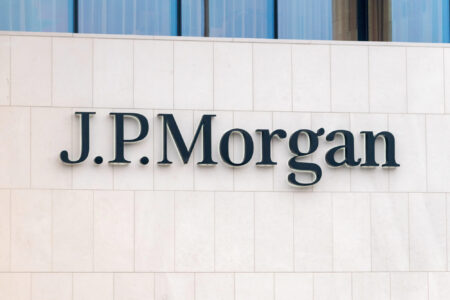What has been happening around Blockchain Technology and Cryptocurrencies this week? The most relevant local and international developments as well as appealing background reports in a pointed and compact way in retrospect in our weekly review.
The acquisition and custody of crypto assets such as Bitcoin is complex. If digital assets are to be integrated into a regulated exchange-traded product such as an "Exchange Traded Fund" (ETF), this complexity multiplies, in particular with regard to regulatory requirements. For years, established financial institutions have been trying to launch a Bitcoin ETF on the U.S. stock exchange, thereby allowing institutional investors easy access to the new asset class. To date, the U.S. regulator has rejected all requests, however. Now two major financial institutions, Goldman Sachs and Fidelity Investments, are seeking approval. Some analysts believe that the approval of an ETF is only a matter of time. A listed Bitcoin ETF on a U.S. exchange would greatly increase institutional accessibility to the cryptocurrency and constitutes a lucrative business for the first mover.
A common critical argument against cryptocurrencies such as Bitcoin relates to the high volatility of these currencies. This circumstance is not an advantageous characteristic for a medium of exchange. Fiat currencies on the blockchain, also known as central bank digital currencies (CBDCs), would displace Bitcoin in this area, some critics argue. In fact, many central banks have already launched CBDC pilots and their introduction is only a matter of time. James Butterfill explains that a comparison between CBDCs and Bitcion makes no sense. Bitcoin is not meant to copy the fiat system nor disrupt banks. The censorship-resistant payment system is a free, decentralized, permissionless network. Its currency, Bitcoin (BTC), has a predetermined monetary policy.
Stablecoins represent an important pillar in the cryptocurrency ecosystem. They are part of the most common currency pairs and allow investors to park liquidity in the blockchain ecosystem. Stablecoins are generally pegged to a FIAT currency and reflect the value of the deposited currency. Stablecoins pegged to the U.S. dollar are the most widely used. Dominant among these are stablecoins such as Tether (USDT) and USD Coin (USDC). The issuers of the respective stablecoins maintain the peg by depositing one U.S. dollar for each token in their reserves. This creates a counterparty risk and the provider must be trusted to back the digital tokens 1:1 with the FIAT currency. This circumstance has often caused a furor in the past, especially with Tether. But there are also stablecoins that are based on automated decentralized mechanisms. Here, overcollateralization with deposited cryptocurrencies ensures the collateralization of the value. Algorithms ensure the smooth functioning of these mechanisms.
Demand for Ether (ETH), the second largest cryptocurrency by market cap, is on the rise. With the growth of the Decentralized Finance (DeFi) space, interest in the Ethereum network currency is growing. On crypto exchanges, there are signs of cryptocurrency supply dwindling. One example of increased demand is represented by the Ethereum investment vehicle Grayscale Ethereum Trust (GETH). The trust manages nearly $5.7 billion worth of ETH, which is almost 2% of the total Ether supply on the market. Moreover, this phenomenon can be observed with other cryptocurrencies as well, some even refer to it as "institutional hoarding".
In addition: The most used DeFi applications is the trading of cryptocurrencies on decentralized exchanges (DEX). Market leader Uniswap is now even competing with the central exchanges. The Ethereum-based protocol sometimes struggles with capacity bottlenecks. The Uniswap development team announced this week the long-awaited upgrade to version 3. It increases capital efficiency and provides new capabilities for liquidity providers. The upgrade is scheduled for early May, however a reduction in transaction costs will follow later.
Selected articles in the weekly review:
An application for a bitcoin ETF has been filed with the SEC by Goldman Sachs as well as Fidelity.
https://cryptovalleyjournal.com/investing/financial-products/fidelity-and-goldman-sachs-file-for-us-bitcoin-etf/
James Butterfill explains why CBDCs will not compete with Bitcoin.
Stablecoins represent an important pillar in the cryptocurrency ecosystem.
https://cryptovalleyjournal.com/education/basics/what-are-stablecoins/
While demand for crypto assets is increasing, the quantity of available cryptocurrencies on exchanges is shrinking.
After a long wait, the protocol upgrade of the largest decentralized exchange - Uniswap - has been announced. It opens up new possibilities for liquidity providers, but does not offer a solution to the high transaction costs for the time being.
Would you like to receive the Weekly review and other interesting formats via push message?




